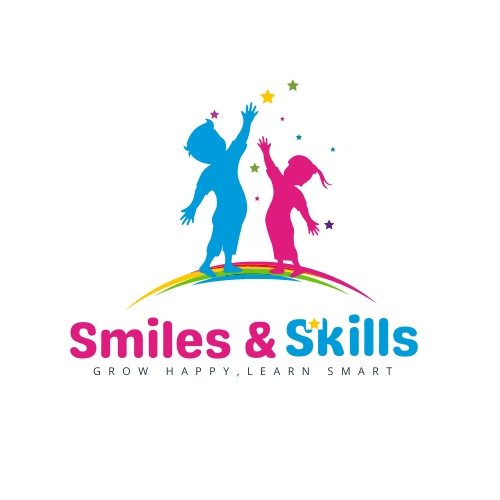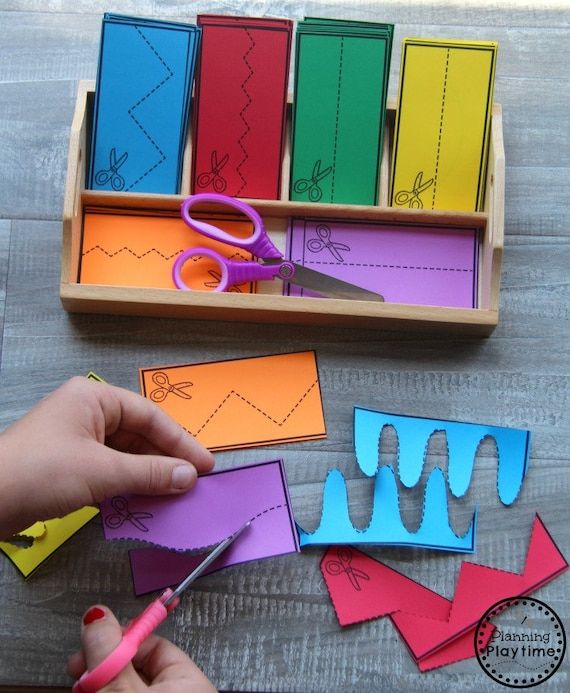Pattern activities for preschoolers enhance cognitive development and recognition skills. These tasks range from simple color sorting to complex sequencing games.
Engaging preschoolers in pattern activities is a crucial part of early education. It helps them understand sequencing, develop fine motor skills, and grasp early math concepts. Hands-on experiences like threading beads, arranging building blocks, and matching pictures cultivate critical thinking and problem-solving abilities.
By incorporating colorful and tactile resources, educators can make learning patterns enjoyable and memorable. These activities set the groundwork for more advanced subjects, such as arithmetic and science, by familiarizing young learners with the concept of order and prediction. By encouraging children to identify and create patterns, we lay a foundation for their success in structured learning environments.
Importance Of Patterns In Early Childhood Education
The Importance of Patterns in Early Childhood Education cannot be overstated. This foundational skill not only introduces preschoolers to the world of mathematics but also hones vital cognitive abilities. Recognizing, understanding, and predicting patterns prepares children for complex problem-solving and logical thinking required in later life. Incorporating pattern activities into early childhood education sparks curiosity and fosters a love for learning. Let’s delve into why developing this skill set early on is critical for preschoolers.
Cognitive Development
Learning patterns play a pivotal role in cognitive development. Identifying sequences and making connections between objects or events enhance a child’s memory, attention, and ability to make predictions. These pattern-related activities stimulate brain development by encouraging logical reasoning and critical thinking skills.
- Memory Enhancement: Patterns require recalling the sequence of events or objects, therefore improving memory.
- Attention Span: As children focus on identifying the order within patterns, they are training their attention skills.
- Prediction Abilities: Upon recognizing patterns, preschoolers can anticipate what comes next, which is critical for everyday problem-solving.
Mathematical Foundation
Pattern recognition is fundamental in laying the groundwork for mathematical concepts like counting, addition, and algebra. Understanding regularities in patterns leads to grasping more complex math processes.
| Math Concept | Relation to Patterns |
|---|---|
| Counting | Counting patterns helps with number fluency and understanding numerical order. |
| Addition | Recognizing repeated addition can lead to an early understanding of multiplication. |
| Algebra | Realizing the consistency in patterns is akin to solving for an unknown variable in equations. |
Therefore, engaging in pattern activities sets a solid foundation for mathematical literacy. Recognizing shapes, sorting items by color or size, and sequencing events in a story are all engaging ways to incorporate patterns into learning. The goal is to make pattern discovery both fun and instructive, unlocking the door to a wider world of educational concepts.
Types Of Patterns To Teach
Delving into the ‘Types of Patterns to Teach’ is a vibrant starting point for any educational journey with preschoolers. Patterns form the basis of early math skills and critical thinking. Introducing these concepts through engaging, hands-on activities can boost cognitive development and prepare children for more complex mathematical concepts. Let’s explore the various patterns preschoolers can learn, designed to cultivate their analytical attributes in a fun and engaging way.
ABAB Patterns
Abab Patterns
Simple yet significant, the ABAB pattern serves as the foundation for understanding sequences. Also known as a repeating pattern, it alternates between two elements. For instance, a child can alternate between two colors, such as red and blue, or two shapes, such as a circle and a square. Visual examples to teach these could include:
- Beads: Stringing beads in red, blue, red, blue.
- Blocks: Stacking blocks with circular and square shapes in an alternating pattern.
- Stickers: Arranging stickers in a sequence of star, heart, star, heart.
AABB Patterns
Aabb Patterns
Stepping up in complexity, AABB patterns require the duplication of each element before a switch. This double repetition strengthens a child’s ability to anticipate and extend patterns. This type of pattern can be taught through activities such as:
- Drawing two yellow suns followed by two white clouds, then repeating the sequence.
- Building with toy bricks, placing two red bricks followed by two green bricks in succession.
- Creating a line of objects where two apples are followed by two oranges, continuing the pattern.
Abc Patterns
The ABC pattern introduces an additional element, adding a layer of difficulty and offering a richer understanding of sequences. A child will learn to identify and form patterns that consist of three repeating elements. Effective teaching tools for the ABC pattern might include:
| Tool | Pattern Example |
|---|---|
| Colored Tiles | Green, Purple, Orange (then repeat) |
| Music Notes | Do, Re, Mi (then repeat) |
| Clay Shapes | Star, Circle, Triangle (then repeat) |
By incorporating these pattern activities into a preschooler’s curriculum, educators and parents pave the way for a smoother transition into more advanced mathematical concepts and logical reasoning. Through the simplicity of patterns, we witness the unfolding of a child’s analytical proficiency.
Incorporating Patterns Into Everyday Activities
Recognizing and creating patterns is not only a critical math skill but also a fun way to boost cognitive development in preschoolers. By incorporating patterns into everyday activities, young children can improve their observation skills, begin to predict outcomes, and understand the idea of sequencing. From art projects to nature walks, opportunities to explore patterns with your preschooler are all around you.
Art And Crafts
Craft time presents a wonderful chance for kids to play with patterns in a tactile and creative way. Start with simple activities like bead threading where children can form patterns with different colors or shapes. Encourage them to make bracelets or necklaces, alternating colors or bead types. Another engaging activity is stamping, where kids can use various stamps to create a repeating pattern on paper. For a bit of messy fun, potato stamping is perfect. Cut shapes into halved potatoes and let the little ones dip them in paint and stamp away, formulating their own unique patterns.
- Collage Making: Use cutouts from magazines or colored paper and arrange them in a pattern on a canvas or large paper.
- Sticker Patterns: Give children a strip of paper and a sheet of stickers and ask them to stick them in a sequential pattern.
- Finger Painting: Encourage your preschooler to use their fingers to paint lines, dots, and shapes in a repeat sequence.
Nature Exploration
Step outside into nature where patterns exist everywhere! On a nature walk, engage your preschooler in a pattern hunt. Begin by identifying simple patterns, like the stripes on a rock or the rings on a tree trunk. Collect leaves, twigs, and stones and sort them into patterns based on size, shape, or color. A nature pattern mat encourages kids to place their findings into segments on a cardboard mat, creating a pattern of their own design.
| Activity | Materials | Pattern Idea |
| Flower Sequencing | Wildflowers | Sequence by type or petal count |
| Leaf Sorting | Different types of leaves | Sort by size or color |
| Rock Arranging | Various rocks and pebbles | Arrange by stripes or colors |
Interactive Pattern Games For Preschoolers
As our little ones grow, we constantly look for ways to challenge their minds and enhance their cognitive abilities. Interactive pattern games are a fantastic tool to foster preschoolers’ analytical skills. Through play, they learn to recognize, repeat, and predict sequences, which forms the basis of early mathematical understanding. Not only do these games promote cognitive development, but they also enhance fine motor skills and problem-solving abilities. Let’s explore some engaging and educative pattern activities tailored specifically for preschoolers.
Pattern Puzzles
Pattern puzzles are a great way to introduce preschoolers to the concept of patterns. These puzzles require children to match pieces according to a sequence or design, which can vary in complexity. A simple pattern puzzle might involve alternating colors (red, blue, red, blue), while more advanced puzzles might incorporate a mix of shapes, colors, and sizes.
- Shape sequence boards: Boards with a series of empty slots where children can place geometric shapes in a particular order.
- Colorful bead threading: Kids thread beads following a color sequence, enhancing their hand-eye coordination along with pattern recognition.
- Picture completion: Completing a partially filled picture with the correct pieces based on a visible pattern.
Pattern Sorting Games
Sorting allows children to organize items into groups based on common attributes. Pattern sorting games elevate this concept by encouraging preschoolers to identify and create patterns through the sorting process.
These games involve various objects or cards that must be arranged to form a pattern – by color, shape, size, or other defining features.
| Type of Sorting Game | Skills Enhanced |
|---|---|
| Color bins | Recognition of colors, differentiation, and categorization. |
| Shape sorters | Shape identification, spatial awareness, and motor skills. |
| Size sequencing sets | Understanding of size, ordering, and relative measurement. |
To make these games more interactive, incorporate playful elements like a timer to turn pattern sorting into a fun race, or use themed objects that resonate with a child’s interests, like animals or vehicles. Hands-on activities like pattern puzzles and pattern sorting games not only make learning enjoyable but also set the foundation for essential academic skills.
Utilizing Technology For Pattern Learning
Today’s digital era offers an abundance of resources for enhancing educational experiences, especially for preschoolers just beginning to understand the world around them. Among these resources, technology plays a pivotal role in teaching fundamental concepts like patterns—an essential math skill. By integrating technology into pattern learning, young learners engage more deeply and develop critical thinking skills. Let’s explore some of the most effective tech tools to help children recognize and create patterns.
Educational Apps
Preschoolers can benefit greatly from educational apps designed to reinforce pattern recognition in an enjoyable and interactive format. These apps often include:
- Animated sequences that illustrate patterns in a visually striking manner.
- Engaging in drag-and-drop activities that help children order objects and shapes correctly.
- Adjustable difficulty levels to cater to individual learning paces.
Such apps encourage hands-on practice and can be used both in the classroom and at home, making them a versatile option for continuous learning.
Interactive Online Games
With an array of interactive online games available, screen time turns into an educational opportunity, boosting pattern recognition skills through play. These online platforms might feature:
- Puzzle challenges where preschoolers complete sequences based on shape, color, or size.
- Memory games that require children to remember and replicate patterns.
- Fun story-based quests that incorporate pattern-related problems.
Through such captivating gaming experiences, kids can sharpen their pattern understanding while developing important computer literacy skills.
Enhancing Fine Motor Skills Through Pattern Activities
Welcome to the colorful and stimulating world of pattern activities for preschoolers! These interactive exercises are not just about creating sequences; they play a pivotal role in enhancing fine motor skills. As children engage with various patterning tasks, they are actually exercising those small muscles in their hands and fingers that are essential for writing, tying shoelaces, and other daily activities. Let’s explore how these fun-filled activities can build dexterity and precision, setting a foundation for a lifetime of adept hand usage.
Tracing Patterns
Tracing is a fabulous way to introduce preschoolers to the world of patterns while simultaneously strengthening their fine motor skills. By following lines and shapes with their pencils or crayons, children develop hand-eye coordination and learn to control their hand movements with greater precision. Here are some engaging ways to incorporate tracing into pattern activities:
- Printable tracing worksheets: These are readily available and can include simple straight lines, curves, and zigzag patterns.
- Dotted line patterns: Encourage kids to connect dots to form patterns, which can then be colored for added fun.
- Sand or salt trays: A sensory approach where children use their fingers or a stick to trace patterns, shaking the tray to start anew.
By tracing patterns, preschoolers work on their pincer grip — the coordination of the index finger and thumb to hold an item — which is crucial for future writing skills.
Patterning With Beads Or Blocks
Beads and blocks are not just toys; they are essential tools for learning and development. Patterning with these materials helps preschoolers refine their fine motor skills as they pick up, place, and thread items in specific sequences. Activities to consider include:
- Bead threading: Children can create patterns with colored beads, threading them onto string or pipe cleaners.
- Block stacking: Using colored blocks, kids can build towers or lines following a particular color pattern, enhancing both creative and motor skills.
- Pattern boards: Preschoolers can place beads or blocks onto pegboards to form patterns, challenging their precision and dexterity.
Such activities foster not only motor control but also cognitive skills like pattern recognition and sequencing. This complex engagement ensures a holistic developmental approach for little learners.
Adapting Pattern Activities For Different Learning Styles
Engaging preschoolers in pattern activities not only boosts their cognitive development but also enhances their problem-solving skills. Tailoring these activities to suit different learning styles can significantly improve their grasp on the concept. Let’s dive into how we can adapt pattern activities for preschoolers with varying learning preferences, focusing on visual and kinesthetic learners.
Visual Learners
Preschoolers who are visual learners process information best when it is presented in a visual manner. To cater to this learning style, consider the following strategies:
- Colorful Pattern Cards: Use cards with different colors and shapes to form sequences.
- Pattern Books: Incorporate books that emphasize patterns through pictures and stories.
- Sorting Games: Provide objects of various colors and shapes for children to sort and arrange in patterns.
With visual cues, these learners can easily discern patterns and enjoy the process of creating their own.
Kinesthetic Learners
Kinesthetic learners need to move and touch to understand new information. These activities stimulate their tactile and motion senses:
- Block Building: Using blocks of different colors to create a tactile pattern experience.
- Pattern Dance: Create a simple dance sequence representing a pattern which they can follow and memorize.
- Texture Patterns: Offer materials with different textures to create and feel their patterns.
These hands-on activities allow kinesthetic learners to physically engage with the concept of patterns, promoting an active learning environment.
Additional Pattern activities can be described in further sections addressing other learning styles such as auditory learners or logical learners

Credit: studentreasures.com
Creating A Pattern-rich Environment At Preschool
Welcome to the vibrant world of preschool education, where creating a pattern-rich environment plays a crucial role in fostering cognitive development. By integrating patterns into both the physical space and the daily routines, educators provide young learners with a canvas to recognize, understand, and predict regularities in their surroundings. Let’s delve into some creative strategies for enriching preschool settings with patterns.
Classroom Decor
Visual appeal and stimulating environments are key to unlocking the potential of young minds. An effective way to bring patterns into the classroom is through decor that serves an educational purpose. Here are some ideas for infusing your preschool classroom with patterned elements:
- Wall Art: Hang posters featuring simple shapes and patterns. Regularly rotate these to introduce new patterns.
- Alphabet Borders: Use borders around bulletin boards that showcase alphabetical order, creating a natural pattern of letters.
- Patterned Fabrics: Dress your windows and tables in fabrics with stripes, dots, or themes to introduce children to different pattern styles.
- Interactive Rugs: Consider a carpet with a grid or road map pattern, where preschoolers can trace paths and recognize repetitive design.
Incorporating these elements not only brightens up your classroom but also serves as constant pattern reminders for your students.
Daily Routines With Patterns
Patterns aren’t just visual; they’re also a part of the organization and time management within a preschool classroom. Establishing daily routines that follow a predictable pattern helps children feel secure and understand the concept of sequencing. Consider these daily pattern activities:
- Morning Circle Time: Start the day with a structured circle time that includes singing songs with repetitive verses.
- Snack Time: Use snacks like crackers or fruit pieces to create edible patterns, which kids can replicate or extend.
- Story Time: Choose books with patterned text or repetitive phrases, encouraging children to anticipate and chime in.
- Clean-Up Time: Create a clean-up song with a catchy chorus that signals time to tidy up, reinforcing pattern recognition through rhythm.
Embedding these regular patterned activities into the day instills a foundation for mathematical thinking and problem-solving abilities.
Frequently Asked Questions For Pattern Activities For Preschoolers
What Are Pattern Activities For Preschoolers?
Pattern activities are engaging exercises that help preschoolers learn to recognize, create, and predict sequences. These activities often involve sorting, matching, and sequencing objects or images according to specific rules or patterns.
Why Are Patterns Important For Preschool Learning?
Understanding patterns is key to developing essential math skills. It sets a foundation for recognizing order and creating predictions. Preschoolers use pattern recognition to make sense of numbers and operations in their learning journey.
How To Teach Patterns To Preschoolers Effectively?
Start with simple patterns using familiar objects like blocks or beads. Encourage preschoolers to continue a pattern you begin or create their own. Use clear, repetitive sequences and praise their successes to reinforce learning.
What Materials Work Best For Creating Preschool Patterns?
Use colorful, tactile materials like beads, blocks, buttons, and stickers. These materials attract preschoolers’ attention and make the learning process engaging. Ensure materials are safe for use by preschool-aged children.
Conclusion
Engaging preschoolers with pattern activities boosts early math skills delightfully. Remember, fun and simplicity are keys to fostering young minds. Explore these playful exercises regularly to spark creativity and cognitive growth. Encourage your little ones; watch them thrive in learning’s beginning stages.
Embrace the joy of patterns together!

